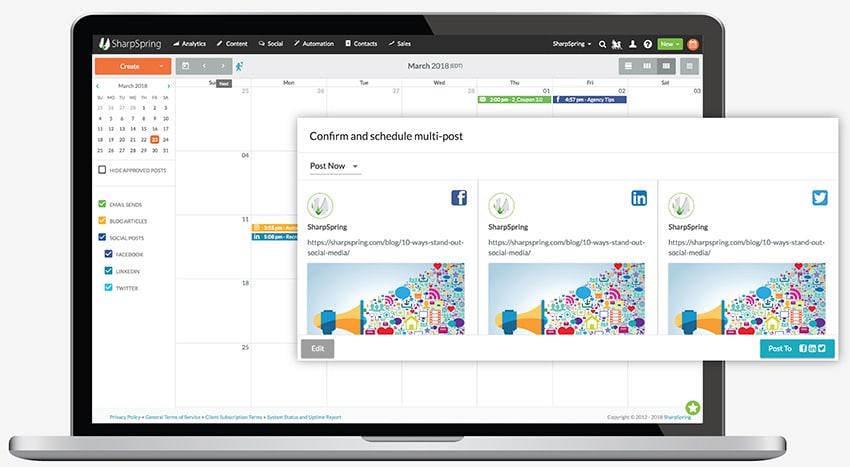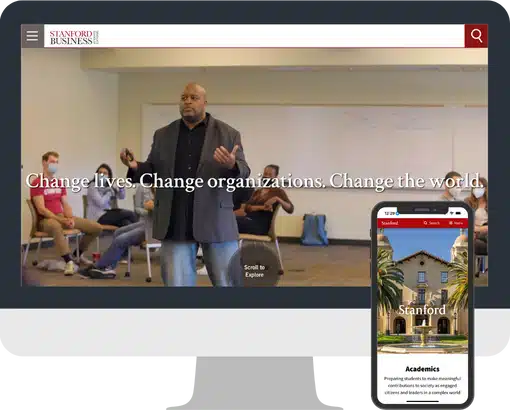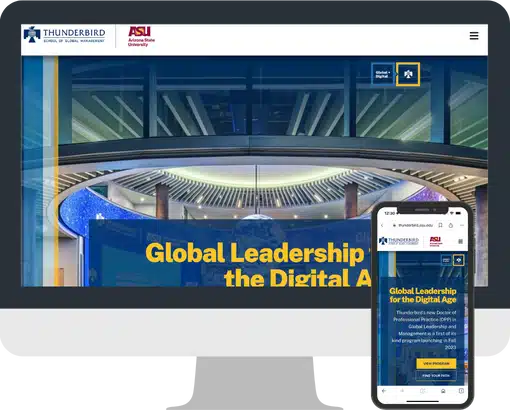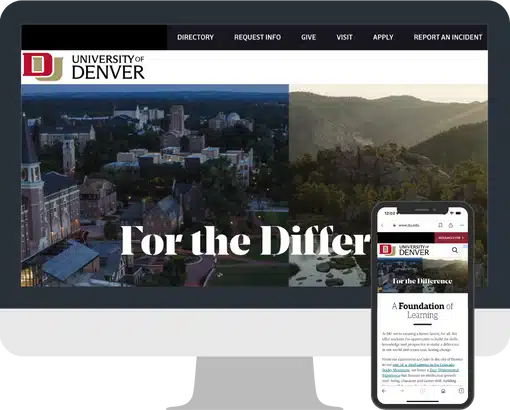You Need a Social Media Strategy if You Market in the Education Sector
Social media strategy for the education sector is very important for marketing success. Widespread internet and digital media access has completely transformed the education sector.
As incoming students and their parents start looking through different school options, they increasingly use social media to help them decide where to enroll.
According to UNESCO, by 2025, the number of students expected to enroll in higher education alone will be 262 million.
Just like any other business, your educational institution is a brand. Your job is to make your school stand out from the rest to attract the most enrollees while keeping your alumni and present students engaged all year. Social media is the best platform to do that.
Number of Facebook users in the world (monthly active users): 2.963 billion (January 2023) Number of people who use Facebook each day (DAU): 2.000 billion (January 2023)
But as you can see, global usage distribution is not limited to the U.S., which is good news for international businesses or brands considering an international expansion.
The continued increase in social media popularity is advantageous for the education sector.
A correctly implemented social media campaign can increase engagement and interaction with potential and current students, create healthy online communities, and establish a worldwide brand.
The Challenges of Establishing a Strong Social Media Campaign

A strong brand image is necessary to attract and engage lifelong advocates for your school.
The challenge is to put together an effective social media strategy. Your objective is to communicate and establish relationships with potential enrollees and other stakeholders, such as parents and industry experts.
Another challenge is figuring out how mobile behavior and social media fit into your target audience’s lives and how to best use that data. How do you maintain your brand as you share content across multiple devices and platforms?
The next section will teach you how to create an excellent social media strategy. It begins with understanding your target audience—including their behaviors and key motivators—so that you can effectively roll out your campaign with a unified and well-directed message.
You will also be guided through tried and tested social media techniques to engage students and stakeholders with your school’s brand.
A good marketing automation platform like SharpSpring has social media management built into its “all-in-one” marketing automation software. Here’s a quick peek at social media management.

10 Strategies to Build Your School’s Social Media Campaign
An unfocused and non-targeted social media campaign will produce unsatisfactory results. We would be happy to send you a free social media strategy template. Several of you already have social media marketing strategy templates.
Great marketing efforts are built on a deep understanding of the market, a strong brand identity, and a clear message on the appropriate digital platforms.
How to create a social media strategy
Creating a social media strategy is essential for any business looking to build a strong online presence and connect with its target audience. With the vast landscape of platforms and ever-evolving trends, having a well-defined plan can help you navigate the complexities of social media marketing. A successful strategy involves understanding your audience, setting clear goals, choosing the right platforms, and crafting content that resonates with your followers.
This guide will explore the key steps to develop a social media strategy that drives engagement, fosters brand loyalty, and ultimately contributes to your business’s growth.
Creating a social media strategy takes time and experience. A social media strategy template will help.
Here are ten critical social media strategies to follow when designing your school’s social media campaign:
#1. Analyze your Social Media Data and Your Social Media Strategy for the Education Sector
Using these eight steps will give you a more unobstructed view of your audience (how to develop a social media strategy)
Step 1: Identify your target audience
Create a list of your target individuals.
Step 2: Use an audience insight tool
A social media tool to gather data about your target audience, such as Facebook Audience Insights.
Step 3: List down the characteristics of your audience
The most common things to watch out for are socio-demographic, psychographic, geographic, and preferred communication channels. You should also look for other opportunities, for instance, where your audience spends their time and activities.
Step 4: List down the behaviors of your audience –
The factors that commonly influence behavior are knowledge, attitudes, self-image, perceived risks, norms, self-efficacy, emotions, social support and influence, and personal advocacy.
Step 5: Identify facilitators and barriers
What factors could potentially hinder your audience from reaching out to your school? What about those that encourage or drive them to?
Step 6: Consider further audience segmentation
Does your audience have a subgroup that is hard to reach and will require different methods or channels? Do some market members have distinct concerns or views about enrolling in your school that will require a different approach?
Step 7: List down the key influencers of your audience
Know the behaviors of those who impact your audiences’ decisions. This is key to further understanding who you are talking to and why they behave the way they do.
Step 8: Create a customer persona
You know, one for parents, prospective students, and other stakeholders.
Tell the story of your audience as a person. Incorporate what you have learned in the first seven steps. Include the basics such as income level, gender, age, marital status, and nuances such as their activities. What is their biggest worry in life? What does a typical day for them look like?

#2. Identify the Best Platforms for your Social Media Campaigns
An effective social media campaign entails using the right platform to convey your message.
Each social media route contains its specialties and advantages unique to them. Knowing what type of campaign to put on which platform will strengthen your message and reach your intended audience more efficiently.
Here are the most popular social media platforms and what they are best used for in a social media setting:
- Twitter. With 326 million active users, this is the best place to share news and updates about your school. It’s also an ideal place to entice new followers and increase brand awareness through branded content.
- Instagram is considered to be the ultimate photo-sharing platform. About 60 million photos are posted daily, garnering at least 1.6 billion likes. It’s also popular for its stories, where users can share videos or pictures in a slideshow format.
- Facebook is one of the most influential and popular social networking sites today. It is designed for connections, building relationships, and sharing content. Facebook Groups allow you to build targeted communities in audience-specific spaces, while Facebook Live allows you to live-stream content.
- Snapchat. Today, Snapchat has more than 293 million daily active users around the globe. Financial year-over-year growth is strong, too, with revenue in Q2 of 2021 reaching $982 million, an improvement of 116.25% compared to the previous year. Its real-time video and photo content-sharing capabilities have a more authentic aesthetic than the highly filtered photos on Instagram.
- YouTube. It’s the second most popular search engine next to Google, and it’s got a very specialized form of content—video. About 30 million people visit YouTube every day. This is the best place to load your student-guided tours, testimonials, documentaries, live events, and other branded content in video format.
Remember to post specialized content for the right audience.
Consider making separate accounts for your school’s different aspects, networks, or departments. This way, your content will be tailored to the audience who follows that particular account.
Check the data analytics for each social media platform regularly to find out which posts are the most popular, which aren’t, and which platforms work best for your school.
#3. Develop a Style Guide for your Social Media Platforms
A style guide is a set of guidelines and standards for how a brand should come across on all channels regarding messaging, tone, voice, and images. It sets a precedent for how writers and creators should create brand content.
It strengthens the brand identity to remain consistent across all platforms.
To build a reliable style guide for your brand, Hootsuite suggests asking the following questions:
- What are the goals you wish to accomplish on each social media platform?
- Who is your target audience?
- What voice or tone do you want to convey your message in?
- What words, phrases, or slang terms do you use in your school?
Laying these elements out will ensure that your social media efforts are all on the same page and consistent with your brand identity.
This is also where content marketing tools can come in handy and help you with your content research.
#4. Tap into Student-Generated Content
As students are already active on social media, tapping into their daily content makes sense. Doing so adds an authentic feel to your campaign, as student-generated material allows the audience to connect with your brand on a more personal and down-to-earth level.
Allowing your students and alumni to share content on your school’s official social media accounts will also organically increase your interaction and engagements, as each has a network you can automatically tap into.
Here are some examples of successful student-generated campaigns:
A strategic higher education marketing campaign.

This approach is more strategic and focused than random, everyday posts. The strategy behind the higher education marketing campaign is simple: develop a common goal and assign a branded hashtag for all relevant posts to fall under.
For example, Vancouver Island University started an Instagram campaign to attract followers who love the eclectic lifestyle and outdoors. Under the #ilearnhere hashtag, the school’s Instagram account could loop in like-minded people to contribute, visit, and browse through their page.
Create an all-unifying hashtag.
A hashtag is a great way to incorporate users across a wide demographic to contribute content to your social media campaign.
It instantly expands your content, reach, and engagement while keeping your brand as the unifying factor that ties everything together. It can be an official school hashtag or one for your school events, sports teams, departments, or subjects.
Allegheny College created the #acgatorgram hashtag. The school encouraged students to promote the hashtag on their social media platforms. The community soon became an organization; even alumni joined in and contributed content under the hashtag.
Encourage students to do online tours or diaries.
Student testimonials serve as an authentic, relatable, and trustworthy resource for any student considering enrolling in a particular school.
Video content of regular students giving a campus tour or offering a glimpse into their school life created in their unique voice is refreshing and engaging.
Have students take over your school’s Snapchat account for a day.
This offers a personal and in-depth account of life on campus from a student’s perspective.
The audience will see a refreshing take on the on-campus experience, the best spots to hang out in, and what the students and faculty are like in all its unedited and unfiltered reality.
#5. Take Advantage of Live Streaming and Stories
Go Live!
More than 1 billion hours of online video are viewed daily. Moreover, live video streaming has increased 47% compared to a year ago. Live video is a popular way to engage students with real-time content that is mostly raw, unedited, and personal.
Real-time video allows you to share valuable insights into various topics that other forms of content cannot do as effectively. For example, you can hold a Q&A session, webinar, or workshop to allow your audience to engage with you in a real-time, in-depth discussion.
Meanwhile, sharing content via Stories is a popular way to engage with your audience. Social media platforms such as Snapchat, Facebook, and Instagram offer prominence on their sites.
Sharing Stories is a great avenue to share with your audience the main attractions on your campus, facilities, sports events, and faculty members, among other relevant content you want to highlight.
You can add captions and filters to enhance and make your photos and videos more enticing to viewers.
#6. Share viral Listicle Content for Your Social Media Strategy for the Education Sector
Listicle content is a tried and tested social media strategy businesses and individuals use. According to CopyPress, these can go viral because:
- They have catchy headlines. They are specially written to catch the reader’s attention. By narrowing down the headline into something relevant to your school, you instantly resonate with your target audience because of their investment in the topic.
- They give the impression of being loaded with bite-sized information. In today’s fast-paced world, people opt for easy-to-digest content compared to long-form ones. Listicles are short, numbered, and to the point, which is an attractive alternative for busy users.
If your listicle is done well, it can be shared mightily and organically across multiple platforms.
#7. Respond to your Followers
Applicable to all business niches, having a successful social media campaign in place, expect a lot of followers and engagements, and, most likely, get inquiries across your social media platforms regardless.
For example, in addition to your portfolios, ensure you are equipped with the best customer service practices if you sell web design services. Consider all these inquiries as potential customers deserving of a timely response.
An article by Buffer notes that one of the most efficient ways to respond to inquiries is through Facebook Messenger.
If you cannot open your Messenger regularly, the app features a Response Assistant that you can set up with automated replies to let users know you will get back to them as soon as possible.
#8. Offer Career Planning Advice
Offering useful content such as career planning advice and support is a great way to raise and strengthen your value as an educational institution. Most incoming students have no real course of action or intended career path as they study. Offering content that addresses this will guide students and benefit your social media efforts.
#9. Add Variety to your Social Media Posts

Full Fabric suggests a smart way to ensure that your social media platforms don’t become overrun with repetitive posts: have content pillars. This means assigning a specific post type for each day of the week.
Think Mondays for school-related news and updates, Tuesdays for sports and recreation, etc. This will keep your posts from becoming monotonous and predictable. Remember, engaging posts that break the mold ensure the best response in terms of reach and engagement.
#10. Create Campaigns around Exciting Events
An effective way to build a buzz around your brand is by featuring big and exciting school events on social media platforms. You can design a campaign for any of your activities by:
- Starting a hashtag.
- Creating a contest.
- Posting pre-production elements, including teasers, the planning stage, rehearsals, set-up, etc., all lead to the main event.
- Creating an event page.
A great example of this is Columbia University’s annual fundraiser called the Giving Day Campaign. They planted social media ambassadors on multiple platforms and called on their alumni to mobilize fundraising efforts.
They used live video streaming to broadcast the 24-hour event to a broader audience across all social media channels. By the end of the event, the school had raised $15.6 million from 15,088 donors nationwide.
Wrap-Up on Social Media Strategy for the Education Sector
An effective social media campaign starts with identifying and truly knowing your audience. Once you have established their behaviors and motivators, you can craft a message that resonates with them.
There may be a sea of social media techniques for you to try, but remember that all of these will be futile without a deep understanding of what motivates and drives your audience.
The heart of any successful social media campaign is the ability to pinpoint what your audience is looking for and then deliver that message most clearly and effectively.
Once you have built a relationship with your audience, maintain it through continued and careful communication. The objective is to create lifelong brand advocates who will ensure your growth and solidify your educational institution’s reputation in the global arena.
We’re listening.
Have something to say about your thoughts on social media strategy for the education sector? We discussed how to build a social media strategy; let us know if you need any social media strategy templates.
General FAQs on Social Media Strategy for the Education Sector
Why is Social Media Important for Schools?
Social media is vital for schools because technology plays a superior role in most students’ lives. The right social media approach can help raise brand awareness, drive enrollment, and increase student engagement.
Which is the best social media platform for engaging students?
A Pew Research Center study attests that Facebook and YouTube are the most widely used online platforms among adults in the U.S. Young adults prefer Instagram and Snapchat, while half of all college graduates who live in high-income households use LinkedIn.
How do you engage college students on social media?
The best way to engage college students on social media is to use platforms that students are already using in a creative and resourceful manner that will incorporate valuable learning experiences into their social media usage.
What makes a school’s social media strategy successful?
A successful social media strategy grants individuals or departments autonomy over their channels while keeping content consistent with one brand identity. It also values followers by providing high-quality, fun content and timely responses.

